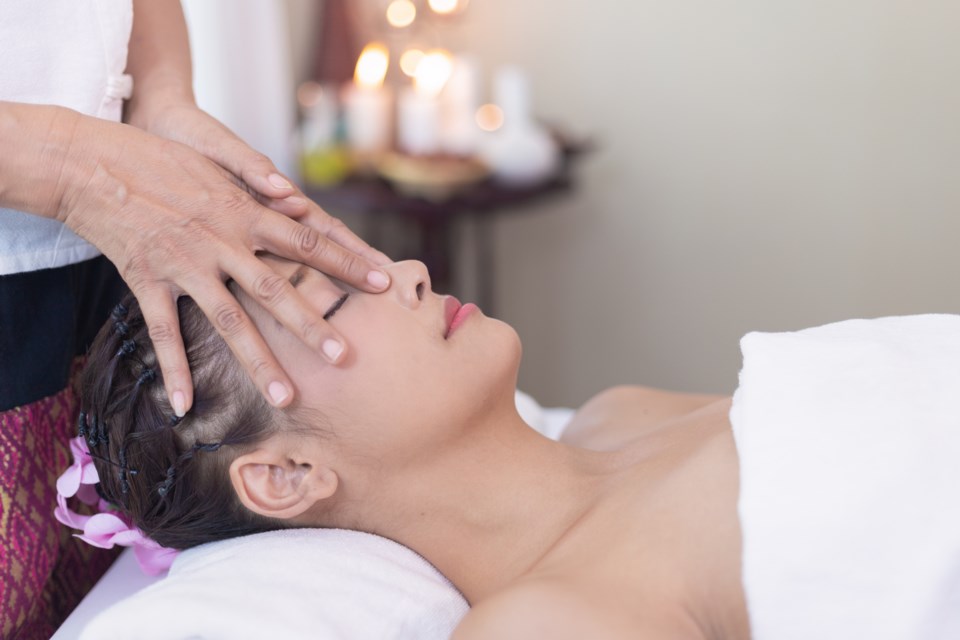If you’re attuned to what’s happening in the massage world, you may have heard the phrase “lymphatic drainage” or “lymphatic drainage massage.”
It sounds a bit off-putting, but experts say it’s nothing more than a gentle form of a massage to move fluids.
“The lymphatic system is part of the body’s immune system. Lymphatic drainage is a technique to move excess fluid called edema,” said Yvonne Wdowiak, a registered massage therapist based in Toronto.
Edema is the medical term for swelling, she says, and your body can swell for various reasons — including injuries or inflammation.
“It can affect a small area or the entire body. Medications, pregnancy, infections, and many other medical problems can cause edema,” she said.
Swelling can happen when small blood vessels leak fluid to tissues and when this fluid builds up, the tissue can swell, WebMD notes.
The lymphatic drainage treatment always begins and ends with treatment to the neck as this is where all the lymphatic vessels come together to join the main vein going into the heart, Wdowiak said.
“Then the therapist would work on the area of swelling or concern,” she said.
“As the lymphatic system is very delicate, the treatment is very gentle.”
Can anyone get a lymphatic drainage massage?
In a healthy body, Wdowiak says, a lymphatic drainage massage will give the lymphatic system a small boost.
“Many clients come to see me for this treatment as part of a detox regime or to strengthen their immune system during cold and flu season,” she said.
But if you don’t have any specific issues or swelling, you won’t be able to see visible effects — they are all internal.
“Also if you are healthy and your lymphatic system is working well, then your body is doing its job and you don’t need lymphatic drainage.”
Grace Dedinsky-Rutherford, a registered massage therapist and soon-to-be executive director for Dr. Vodder International Schools in B.C., tells Global News the massage technique dates back to the 1930s in Europe.
“It requires very, very light techniques in order to stimulate the vessels to move,” she said.
“The lymph vessels contract normally two to three times a minute … [the massage] stimulates some of the vessels seven to 10 times a minute.”
Dedinsky-Rutherford works with a variety of clients, often some cancer patients. “They’ve got a large arm or large leg, or blockage in the face or genitals.”
Anyone who recently had surgery could also use the massage technique, Wdowiak said.
“It will decrease swelling and speed healing, [enable] pregnant women to help deal with the common problem of swollen feet, and of course anyone with a lymphatic system dysfunction,” Wdowiak said.
This includes lymphedema, a condition that can cause swelling in the arm or legs. You can be born with it, she adds, or acquire it if you undergo lymph node removal.
“All combined decongestive therapists have specific training in how to work with cancer patients and survivors who are dealing with lymphedema, due to removal of lymph nodes or severing of lymphatic vessels.”
When it comes to people at risk, Wdowiak says this can include someone who already has a severe liver condition or unregulated high blood pressure.
“The technique will slightly increase blood volume and push more toxins through the liver to process,” she said.
Can jade rollers work?
Jade rollers have been popular in the last few years and experts say can even help with lymphatic drainage.
Speaking with HuffPost, Dr. Jennifer Chwalek, a dermatologist at Union Square Laser Dermatology in New York, said jade rollers could be used in place of a massage.
“Whenever there’s stagnant circulation or swelling at all in the face, massage can help that lymph fluid drain into the [proper] channels and away from around your eyes and certain areas where it tends to settle,” she told the site.
Dedinsky-Rutherford says she also recommends paint rollers or jade rollers for clients who want to try their own massages at home. This is a question she is often asked.
But Wdowiak isn’t convinced.
“Jade rollers have nothing to do with legitimate lymphatic drainage treatments,” she said.
“They are not part of our training … I’ve never used them and don’t know anyone who does.
“After reading a bit about them, I don’t see any negative effects, but any type of gentle treatment of the face will move fluids whether with a tool or your own hands.”
Always do your research first
Both experts say before you try any type of massage treatment, speak with a health professional first.
Wdowiak says a therapist’s job is to educate the clients on their condition and their options.
“We are also trained in bandaging and advising clients on appropriate compression garments to help manage their edema.”
She says the technique is done on skin, so the client will be covered by a sheet and blanket and only the area that is being worked on will be uncovered.
“The technique is very light and repetitive. Most clients find it very soothing and report feeling very relaxed afterwards.”
- Global News
